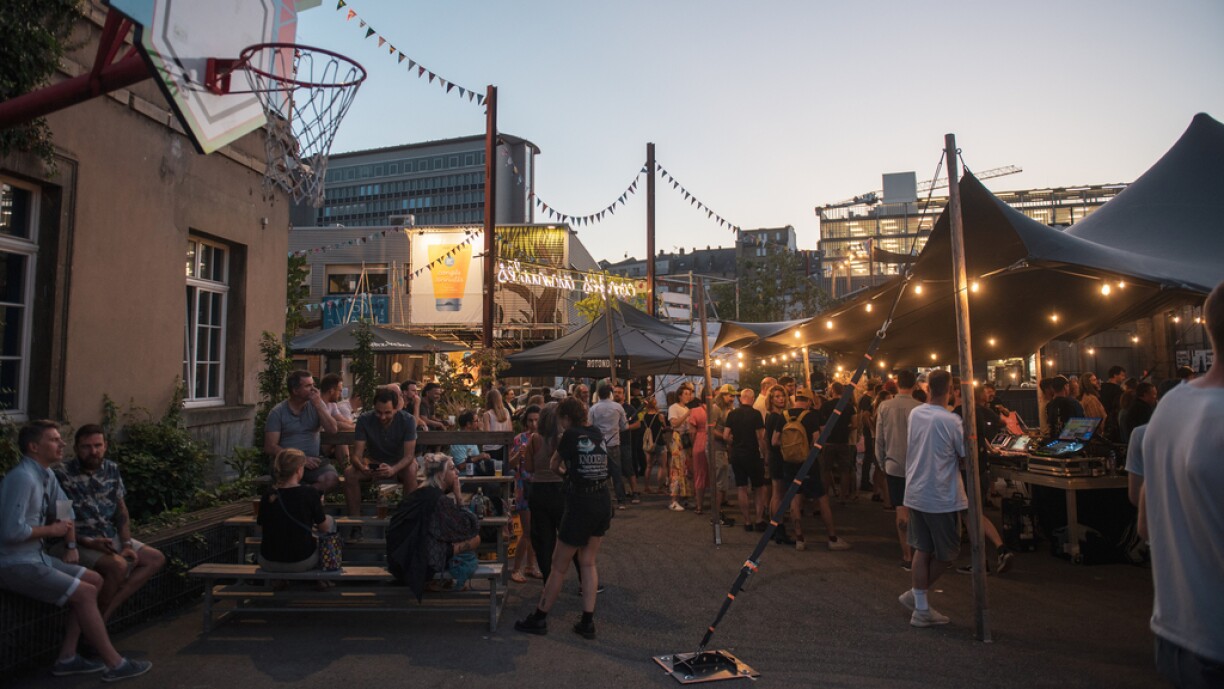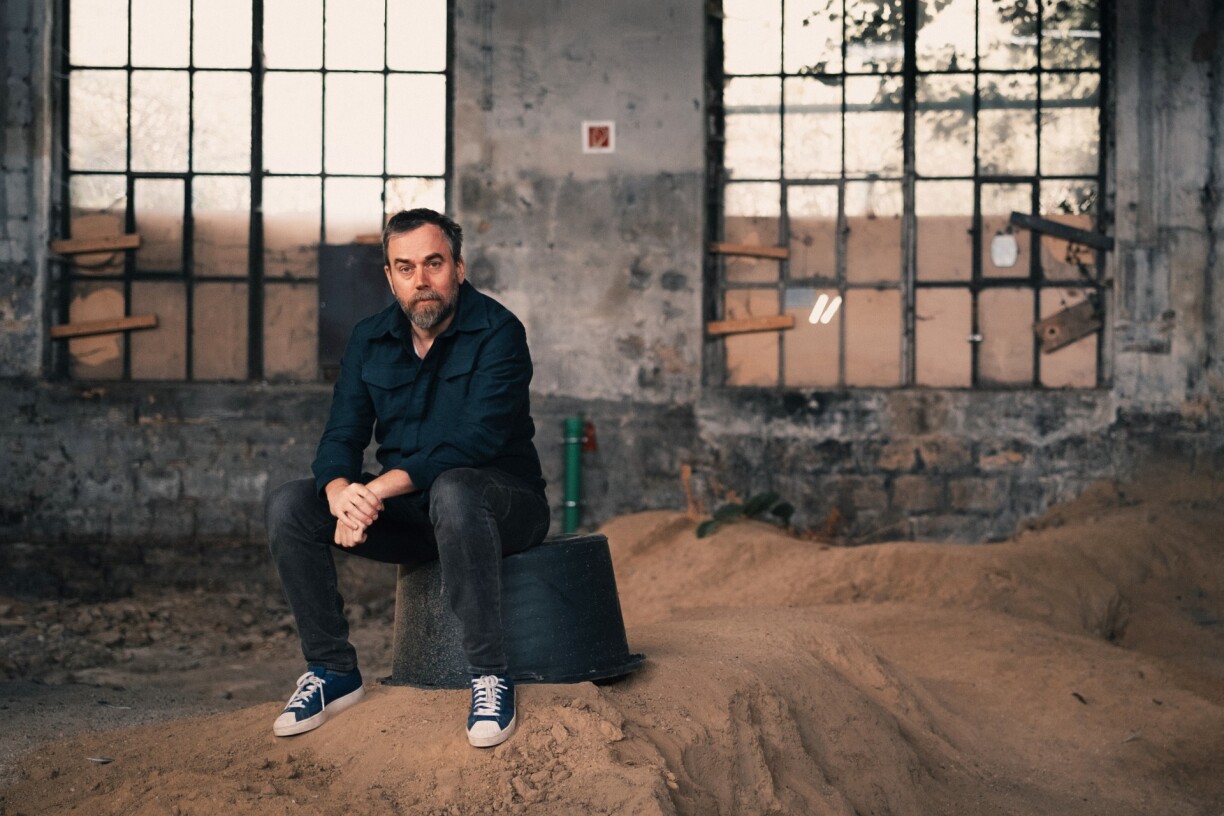
The story of Rotondes spans three centuries, and has never stopped evolving. In this three-part series, we dive into the past, present, and future. The story here takes us from 2007 to 2025.
There’s a reason Rotondes as we know it now doesn’t have a birthday: it has continuously developed and transformed over the decades with one new beginning after another, from its original purpose as a storage and repair space for trains and buses in 1875, to the home of 2007’s European Cultural Capital, to its move to Hollerich in 2008, to its return to Gare in 2015.
The man who has been leading the vision and artistic direction of Rotondes since 2016 is Steph Meyers.

Meyers first managed the socio-cultural part of the project in 2005, and was then asked to lead the exhibitions, a role he held from 2008 until 2016. After curating exhibitions for a decade, Meyers felt inclined to take on a new challenge while remaining in the organisation he had helped build. “It was the right time,” he added.
Following the retirement of former director Robert Garcia (known as Roga), Meyers stood as a candidate for his replacement – he has stayed in this position ever since.
“When Roga moved out we were 16 or 17 people, now we are above 30 – so we are another structure completely,” the former high school art teacher said. “We grew a lot during these 10 years and yes, it was a challenge for me to manage this group because I didn’t learn it; it was not my initial purpose.”
Leading the way along with the five dedicated cornerstones that make up today’s Rotondes - Music, Socio-Cultural, Markets and Events, Visual Arts, and Performing Arts. Other members of the team have also been there since the start.
“I started here in 2007 when it was the European Capital of Culture, and since then I’ve never left the structure,” Music programmer Marc Hauser said.
He recalled how the type of venue Rotondes provided for music was new to the Luxembourgish scene at the time. [In 2007] it was a bit new to have this kind of venue, with a 250 capacity,” he said. “Before that, you only had bigger venues like Kulturfabrik and Atelier, which had capacities of [up to 1,000]. It was completely different, and I think that was the success of the venue.”
Over the years, he has seen significant changes in the audience.
“What I really noticed is that at the beginning – 2007, 2008 – people who showed up to go to a concert didn’t really want to pay an entrance fee, because they didn’t know the band,” he said. “Now, it’s totally normal to pay for a band that you don’t know but that you might like – so that’s a big difference.”
His partner in music programming Nicolas Przeor agreed.
“There’s a strong identity regarding the bands and the acts playing over here,” he shared. “It’s always a bit out of the box, a bit more underground than other venues. So if you’re a bit curious and you like left-field acts, then you might find stuff you like over here.”
While it contributes so much to the identity of the space, putting together a quality list of interesting and at times eclectic acts consistently is as rewarding as it is challenging. Striving for a good balance, this year’s season sees an even split of local and international bands.
“There are more people showing up to the gigs than there was before, so there is a kind of musical culture that’s building up regarding the audience,” said Hauser. “But it’s still quite fragile – you can end up with only 30 people!”
To keep the programme fresh and interesting, the pair also have a tendency of not featuring the same band twice. While this leads to difficulties in growing a fan base, more organic methods are relied on to draw a crowd.

“For me, it’s really this culture of word of mouth,” Przeor said. “Back in the day, most of the crowd were our friends. Now, there are more people whom we’ve actually never seen, and I think it’s good. It’s a natural way to grow.”
Their goals for the future are ambitious but clear: “If we would be able to, we would have shows every day,” Hauser shared. “It’s just important for us to share music as much as possible,” Przeor added.
Performing Arts and Creative workshops programmer Laura Graser has also watched the space grow over the decades.
“We had this European Capital of Culture here in 2007, which was just crazy, I mean, just a crazy project,” she remembered. “Maybe you do a project like that once in your life.”
Following the intense programming of 2007, Graser said that they had created enough to build on: “It was really intense, and we could use this special year to give a boost that would have maybe taken longer after, so we could build on this afterwards,” she said. “By then we had so much there: we already saw a team growing from a very few people, until it was a big team for the year itself.”

Referring to the period following 2007 while the team had set up in Hollerich as the start-up years, Graser remembers a time of identity and insistence. “Those first years were really a time of proving that we have to exist; we have to prove that we are a new cultural institution and we have to prove that we can do great work and that we have to exist politically, from a societal point of view,” she said.
These days, Graser shared what she hopes to bring to the community in Luxembourg: “Strong moments and encounters, and stimulation, and sharing.”
With plenty of plans for the 2025/6 season and renovations already in space for the next three years, Rotondes has already begun to expand their space and diversify – first with their annual PICelectronIC, which was for the first time held beyond the borders of Rotondes.

“I got very good feedback, with people saying we have to do it more than once a year, and we have to continue to do it [at Parc de Bonnevoie]!” Meyers said.
While that’s the plan for next year’s PICelectroNIC, Meyers maintains that the final goal is to come back to Rotondes, armed with the experiences gained from beyond.
Next, the team heads to Metz, for Turn On, their first exhibition which will take place outside a Rotondes venue.
Come 2025 and beyond, the team has come far from the ‘startup stage’. “We are more in the stabilising stage now,” Graser said, “but we are also facing this challenge of what will be the next step. When the works will be entirely done, it will really be a new step again. We’ll have new opportunities with the way we work - so we will have to redefine priorities and new projects.”
Read more about the history of Rotondes here.